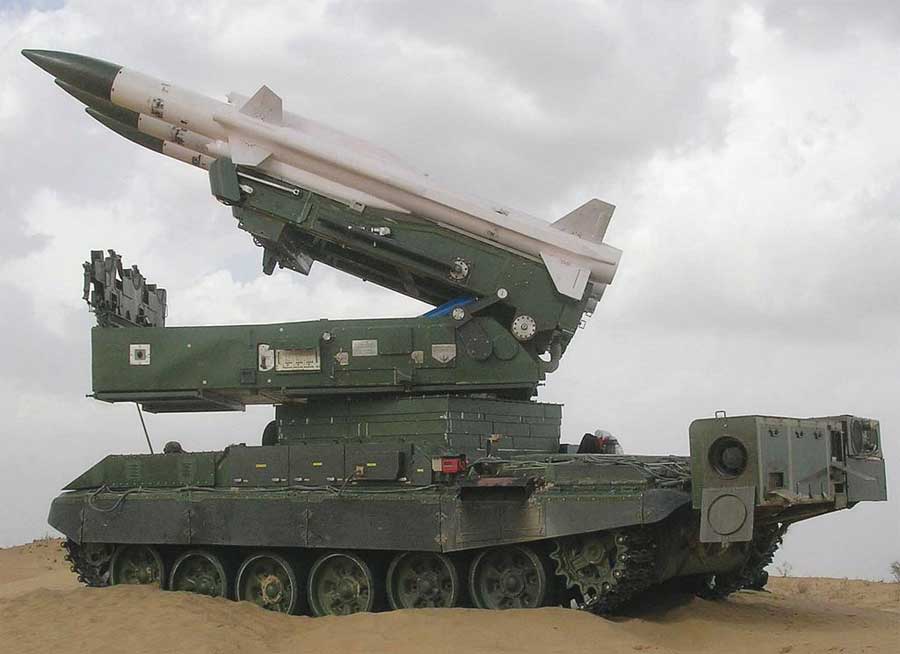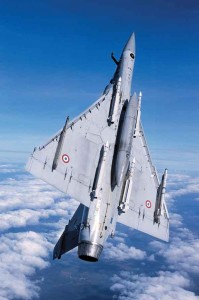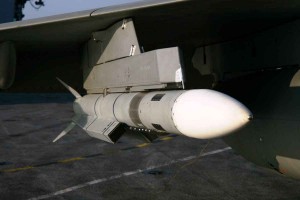In air combat, numerical superiority generally wins over quality, meaning much larger forces of inferior aircraft may swamp even superior forces while suffering surprisingly small losses. That is why a blind quest for more technologically advanced AD aircraft without corresponding emphasis on their weapon systems is counterproductive.
…missiles are getting more accurate and deadly and combat pilots need to employ all the skill and resources at their command to counter them.
On July 17, 2014, Malaysia Airlines Flight 17 was cruising from Amsterdam to Kuala Lumpur at an altitude of ten kilometres. The route of the Boeing 777-200ER happened to take it near the Ukrainian-Russian border. It is hard to say what the passengers and crew were thinking but it is unlikely they were troubled by the possibility of a missile strike. Yet that is what happened. A Russian-made Buk missile, a self-propelled, medium-range weapon probably launched by pro-Russian separatists in Ukraine, hit the airliner and caused it to crash with the loss of all 298 lives on board.
The downing of a civilian aircraft by a missile is reprehensible and thankfully rare. However, practically from the time a combat aircraft gets airborne during conflict, the pilot has to be alert to the threat of anti-aircraft missiles. These may be Air-to-Air Missiles (AAM) launched from another aircraft or Surface-to-Air Missiles (SAM) fired from land or sea. Either way, missiles are getting more accurate and deadly and combat pilots need to employ all the skill and resources at their command to counter them.
The United States (US) has the world’s best missiles because that’s where military power is concentrated and that is where the big bucks to design and produce the latest weaponry come from. Yet since the turn of the century, the US has been embroiled in counter-terrorism operations in Iraq, Afghanistan and other regions against adversaries with technological capabilities far inferior to its own. There was little incentive for the US, beset by economic woes, to spend huge sums to develop new and better weapons. An added factor that inhibited the development of more advanced missiles was the very limited occurrence of air-to-air engagements in the recent past. Manufacturers too preferred to concentrate on air-to-ground weaponry which was in constant demand.
However, with Russia now adopting a more muscular stance and China sharpening its offensive and defensive capabilities, the US military realises that asymmetric operations against a ragtag bunch of militants are a far cry from tackling heavily-armed adversaries in so-called contested environments. That is why arms manufacturers are incorporating significant improvements in missile guidance and seeker technology.
The Long and Short of Missiles
Anti-aircraft missiles broadly fall into two categories according to their guidance systems – those that depend on radar (generally long or medium-range missiles) and those that use other types of guidance like infrared or laser (generally short-range missiles). Infrared (IR) guided missiles are also called “heat seekers” since the missile passively heads for the IR heat signature emitted by the target.
The latest fifth-generation AAMs have high resistance to IR counter-measures, impressive off-bore sight performance and extreme agility…
When it comes to AAMs, it is more common to describe them according to their maximum range. AAMs designed to engage targets at ranges of less than 30 km are called short-range or Within-Visual-Range Missiles (WVRAAMs). These are essentially dogfight missiles because they depend on their agility to achieve a kill during the fierce manoeuvring typical of close combat. Obviously radar guidance wouldn’t work so they usually depend on IR guidance. Most modern WVRAAMs use a Helmet-Mounted Sight (HMS) for targeting. On the other hand, long or medium-range missiles, also known as Beyond-Visual-Range Missiles (BVRAAMs), usually rely on some form of radar guidance. Their stand-off range may extend to a couple of hundred kilometres or so.
There was a brief period around 1960 when the lethality of missiles began to be hyped to such an extent that some manufacturers stopped fitting guns on aircraft. However, it soon became clear that an aircraft without a capable gun was severely handicapped in live combat. Therefore, practically all modern fighter jets carry several hundred rounds of 20- to 30-mm ammunition that can be fired at very close range.
Although missiles are commonly compared by their maximum engagement range, their practical range is limited by various factors. A missile system with a claimed range of 100 km will be effective at this distance only in ideal conditions – a head-on launch against a non-manoeuvering target at high altitude. If any of these conditions are varied, the effective range may reduce considerably. For instance, the missile might miss the target if fired in combat at low level beyond say ten kilometres.
Therefore, a more useful way of comparing the performance of various AAMs is their “no-escape zone” – the zone within which there is a high (defined) kill probability against a target even if it has been alerted. In other words, the target aircraft cannot manoeuvre its way out of danger once a missile is launched at it.
The latest fifth-generation AAMs have high resistance to IR counter-measures, impressive off-bore sight performance and extreme agility. These qualities are enhanced by seekers with electro-optical Imaging Infra-Red (IIR) that allow the missiles to “see” images rather than single points of IR radiation. Advanced digital processing also gives the missiles greatly expanded no-escape zones and increased ranges. In other words, more problems for those who happen to be at the receiving end of missile attacks.
Calculations show that the Meteor could be three to five times as lethal as the best current BVRAAMs.
Aerial Engagements
Most modern AD systems are underpinned by Airborne Warning and Control System (AWACS) aircraft, or their poor cousins, Airborne Early Warning and Control System (AEW&CS) aircraft. Any adversary would obviously be keen to get rid of these highly capable and expensive planes. For instance, the Russian Novator K-100 is an AAM specifically designed as an “AWACS killer” at ranges up to 200 km. It can also engage other lucrative targets like Air-to-Air Refuelling (AAR) aircraft, maritime patrol aircraft, Intelligence, Surveillance and Reconnaissance (ISR) aircraft and Electronic Warfare (EW) aircraft.
For many years, China was heavily dependent on imports of cutting-edge missiles. Not any longer. On September 15, 2015, China conducted a flight test of its latest BVRAAM, the PL-15, and it successfully destroyed a target Unmanned Aerial Vehicle (UAV). While details are sketchy, it is believed the PL-15 has improved propulsion systems, an advanced rocket motor and maybe even a ramjet engine that significantly increase its maximum range. Since the PL-15’s predecessor, the PL-12, has a range of about 100 km, it is presumed that the new missile can fly much farther, perhaps 150 to 200 km. If this is true it would pose a grave threat to US aircraft because it could be launched while flying out of range of many of America’s current missiles.
The PL-15 also has an improved active radar seeker and jam-resistant data links. Although Chinese aircraft like the J-11B and forthcoming stealth fighters such as the J-20 and J-31 do not yet have long-range radars it is possible that China’s KJ-2000 AEW&C aircraft would assist them. The KJ-2000 could communicate the location of the target aircraft to the attacker and provide minor course corrections to the PL-15’s advanced radar so as to guide it unerringly to the target.
Israel is a renowned exponent of aerial warfare and the missile most responsible for its proficiency is the Python.
Europe too is striving to improve its missile clout. MBDA, a European multi-national developer and manufacturer, will soon offer the Meteor radar-guided BVRAAM with a range of over 100 km. The Meteor is effective even against distant manoeuvering targets in a heavy Electronic Counter Measures (ECM) environment. It features an active radar seeker, a two-way data link to provide target information updates to the missile in flight, a solid-fuel ramjet motor and a blast fragmentation warhead armed with proximity and impact fuses for maximum damage. It is claimed to be one of the best AAMs in the world with the biggest no-escape zone.
Calculations show that the Meteor could be three to five times as lethal as the best current BVRAAMs. That is because its ramjet power can be varied so as to make it fastest when it is approaching its quarry, rendering escape difficult if not impossible. MBDA already has over 1,000 Meteor missiles on order, to equip all three of Europe’s advanced fighters – the Eurofighter Typhoon, the Dassault Rafale and the Saab JAS 39 Gripen. It is quite likely that the US Lockheed Martin F-35 Lightning II stealth fighter might also be equipped with the Meteor later. The Meteor would be an improvement over the current leading AAM of the West – Raytheon’s AIM-120D AMRAAM, with a claimed range of about 180 km but probably less in real-life engagements.
Israel is a renowned exponent of aerial warfare and the missile most responsible for its proficiency is the Python. The latest model, the Python-5, is claimed to be among the world’s best. As a BVRAAM, it has Lock-On After Launch (LOAL) capability. It also has all-aspect/all-direction attack ability. This versatile missile is also usable in very short range combat.







